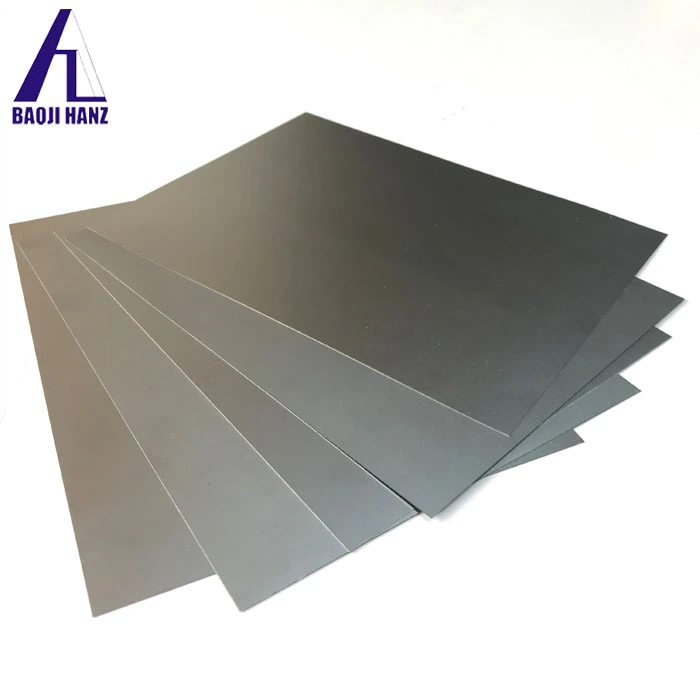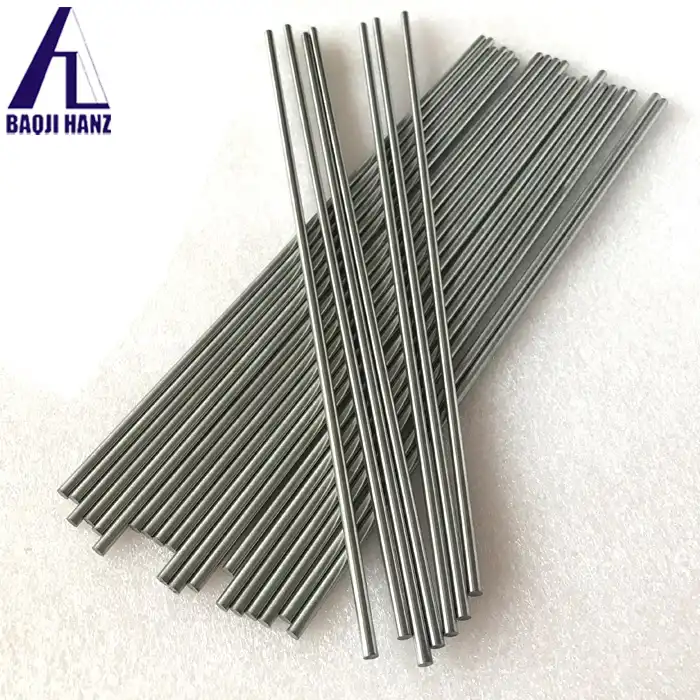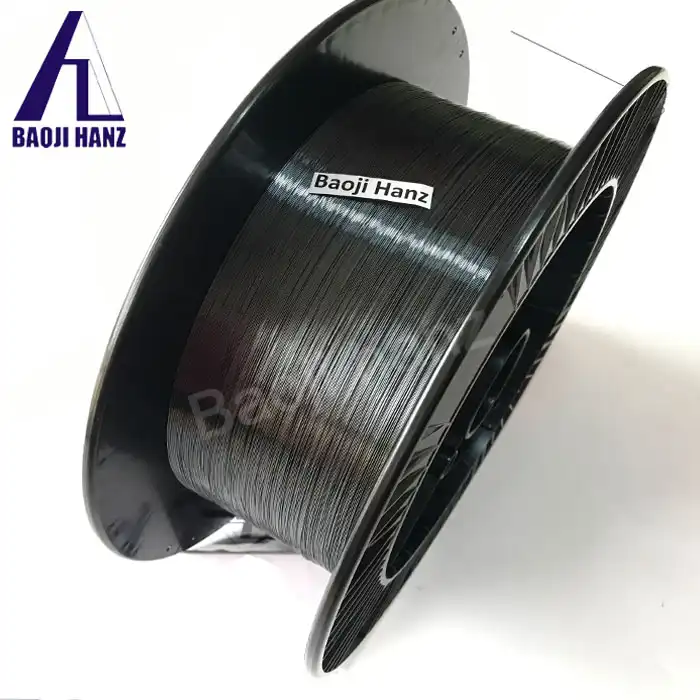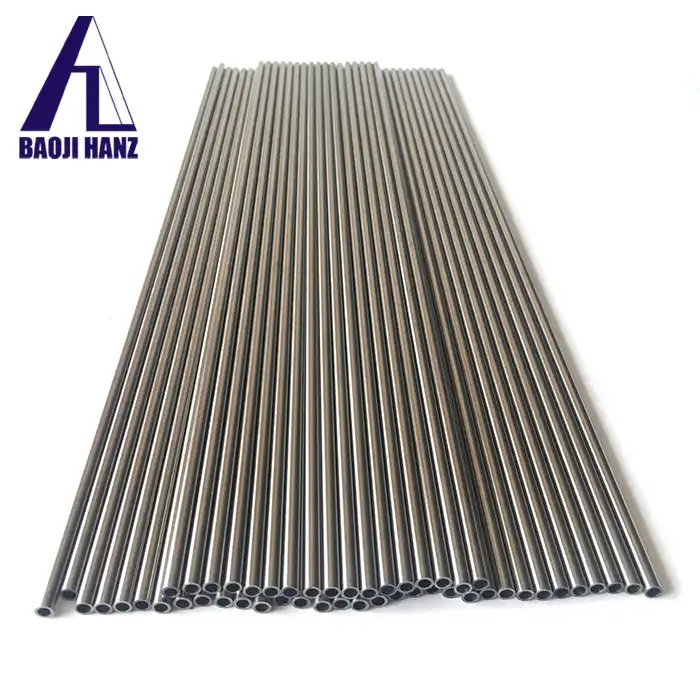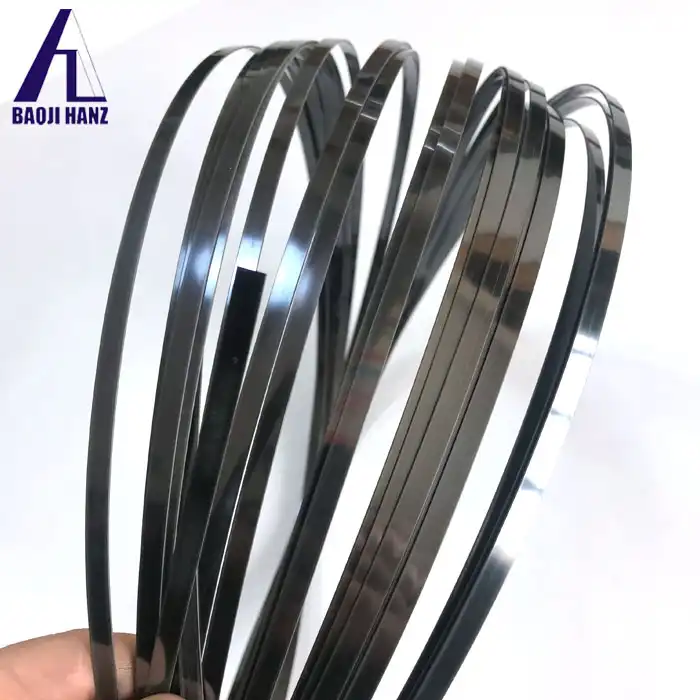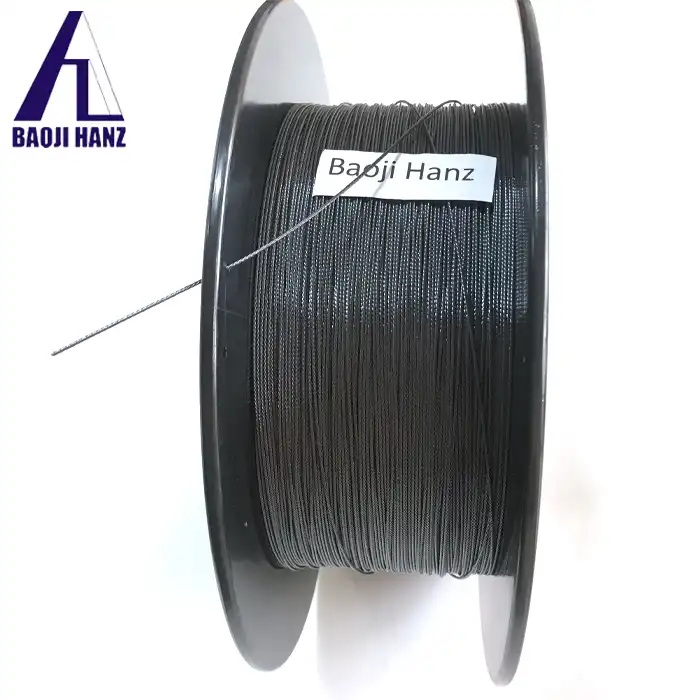Where are nitinol paperclips used?
2025-02-22 00:08:12
Nitinol paperclips, an innovative application of shape memory alloys, have found their way into various industries and everyday applications. These remarkable fasteners, made from a nickel-titanium alloy, possess unique properties that set them apart from traditional steel paperclips. Paperclip nitinol are used in diverse settings, ranging from office environments to specialized technical fields. Their ability to return to a predetermined shape when heated makes them particularly valuable in situations where conventional paperclips might fail or be impractical.
In office settings, nitinol paperclips offer a novel solution for organizing documents, especially those that need to withstand repeated use or exposure to varying temperatures. Their superelastic nature allows them to bend and flex without permanent deformation, making them ideal for securing thick stacks of paper or materials that might cause standard paperclips to lose their shape. Beyond the conventional office, these shape memory fasteners find applications in industries such as aerospace, where temperature fluctuations are common, and in medical fields, where their unique properties can be harnessed for specialized purposes.
The versatility of nitinol paperclips extends to creative and educational domains as well. They serve as excellent demonstration tools in science classrooms, illustrating the principles of shape memory alloys and phase transitions. Artists and designers have also embraced these innovative fasteners, incorporating them into jewelry, sculptures, and interactive art pieces that showcase the material's shape-changing capabilities. As awareness of nitinol's properties grows, so too does the range of applications for these seemingly simple yet technologically advanced paperclips.
Unique Properties of Nitinol Paperclips
Shape Memory Effect
The shape memory effect is the defining characteristic of Paperclip nitinol. This remarkable property allows the paperclip to return to its original shape when heated, even after being severely deformed. The mechanism behind this behavior lies in the crystal structure of the nitinol alloy, which undergoes a phase transformation between its low-temperature (martensite) and high-temperature (austenite) states. When a nitinol paperclip is bent or twisted at room temperature, it remains in that shape. However, upon heating above its transformation temperature, the alloy transitions to its austenite phase, causing the paperclip to revert to its pre-programmed shape.
This unique attribute of nitinol paperclips opens up a world of possibilities for their use in various applications. For instance, in the field of robotics, engineers can design compact actuators that utilize the shape memory effect of nitinol to create motion or apply force. In the realm of fashion, designers have experimented with nitinol-infused fabrics that can change shape or texture in response to body heat, creating dynamic and interactive clothing.
Superelasticity
Another key property of nitinol paperclips is their superelasticity, also known as pseudoelasticity. This characteristic allows the paperclip to undergo large deformations without permanent damage, returning to its original shape when the stress is removed. Unlike conventional metals that have a limited elastic range, nitinol can be bent or stretched far beyond what would typically cause plastic deformation in other materials.
The superelastic nature of nitinol paperclips makes them particularly useful in applications where repeated bending or flexing is required. In orthodontics, for example, nitinol wires are used to create braces that apply consistent, gentle force to teeth over extended periods. This same principle can be applied to paperclips, allowing them to securely hold documents together even when subjected to frequent handling or storage in tight spaces.
Biocompatibility
Nitinol's biocompatibility is another significant property that expands the potential applications of nitinol paperclips beyond traditional office use. The alloy's resistance to corrosion and its ability to coexist with living tissues without causing adverse reactions make it an excellent choice for medical and biological applications. While standard paperclips are not typically used in medical settings, the biocompatible nature of nitinol opens up possibilities for specialized fasteners in healthcare environments.
In the medical field, nitinol is already widely used for implants, stents, and surgical instruments. The concept of a biocompatible paperclip could lead to innovative applications in medical record-keeping, sample preservation, or even as part of minimally invasive surgical techniques where a shape-memory fastener could be beneficial. The combination of biocompatibility with shape memory and superelastic properties makes nitinol paperclips a versatile tool with potential uses far beyond conventional paper fastening.
Applications in Various Industries
Aerospace and Aviation
In the aerospace and aviation industries, Paperclip nitinol have found niche applications that leverage their unique properties. The extreme temperature variations experienced by aircraft, from the heat of the tarmac to the cold of high altitudes, make nitinol an ideal material for certain components. While not used as actual paperclips in this context, the same shape memory and superelastic properties are applied to create fasteners, connectors, and actuators that can withstand these harsh conditions.
For instance, nitinol-based fasteners are used in aircraft engines and structural components where traditional materials might fail due to thermal cycling or vibration. The ability of nitinol to maintain its shape and properties across a wide temperature range ensures that these components remain secure and functional throughout the flight. Additionally, the lightweight nature of nitinol compared to some other high-performance alloys contributes to fuel efficiency, a critical factor in aerospace design.
Medical and Dental Fields
The medical and dental fields have embraced nitinol technology, including applications that share similarities with the concept of a shape memory paperclip. In orthodontics, nitinol archwires revolutionized the way braces work. These wires, which behave much like a large-scale nitinol paperclip, apply consistent, gentle force to teeth over extended periods, thanks to their superelastic properties. This results in more efficient tooth movement and reduced discomfort for patients.
Beyond orthodontics, nitinol is used in a variety of medical devices and implants. Stents made from nitinol can be compressed into a small diameter for insertion into blood vessels and then expand to their full size once in place, utilizing the same shape memory effect that makes nitinol paperclips unique. In minimally invasive surgery, tools incorporating nitinol elements can navigate through complex anatomical structures, changing shape as needed to reach their target without causing damage to surrounding tissues.
Research and Education
In research laboratories and educational institutions, nitinol paperclips serve as more than just fasteners; they become valuable tools for demonstration and experimentation. The visible and tactile nature of the shape memory effect makes nitinol paperclips excellent subjects for teaching materials science, physics, and engineering concepts. Students can easily observe the transformation process by deforming a nitinol paperclip and then heating it to trigger the shape recovery.
Researchers use nitinol, including forms similar to paperclips, to study the fundamental properties of shape memory alloys and develop new applications. The simplicity of a paperclip shape allows for easy manipulation and measurement, making it an ideal model for investigating factors such as fatigue life, thermomechanical behavior, and the effects of alloying elements on shape memory properties. These studies contribute to the ongoing development of new nitinol-based technologies across various fields.
Innovative Uses and Future Potential
Smart Textiles and Wearable Technology
The integration of nitinol into textiles is opening up new possibilities in the realm of smart clothing and wearable technology. While not directly using paperclips, the principles behind Paperclip nitinol are being applied to create fabrics that can change shape, texture, or thermal properties in response to environmental conditions or user input. These smart textiles could revolutionize industries ranging from sportswear to protective gear for extreme environments.
Imagine a jacket that automatically adjusts its insulation properties based on the ambient temperature, using nitinol fibers that expand or contract to create air pockets within the fabric. Or consider athletic wear that provides targeted compression and support, adapting to the wearer's movements using embedded nitinol elements. The shape memory and superelastic properties that make nitinol paperclips unique are the same characteristics driving these innovations in wearable technology.
Robotics and Automation
In the field of robotics and automation, nitinol components inspired by the simple paperclip are being used to create compact, efficient actuators and mechanisms. The ability of nitinol to generate significant force when transitioning between its martensite and austenite phases makes it an attractive option for creating motion in small-scale robotic systems. These actuators can be triggered by electrical heating or environmental temperature changes, allowing for the development of robots that can operate in diverse conditions.
One particularly interesting application is in the development of soft robotics, where traditional rigid components are replaced with flexible, adaptable materials. Nitinol structures, similar in principle to shape-memory paperclips, can be used to create grippers, locomotion systems, and even artificial muscles for soft robots. These systems can navigate complex environments, handle delicate objects, and interact safely with humans, opening up new possibilities in fields such as medical robotics and exploratory devices for challenging terrains.
Architectural and Structural Applications
The construction and architecture industries are beginning to explore the potential of nitinol in creating responsive and adaptive structures. While not using paperclips per se, the same shape memory and superelastic properties are being applied on a larger scale. Nitinol-based fasteners and connectors in buildings could allow for structures that can self-adjust to environmental stresses, such as earthquakes or high winds, potentially reducing damage and improving safety.
Additionally, architects are experimenting with nitinol elements in facades and interior design features that can change shape or configuration in response to temperature changes or user preferences. This could lead to buildings that automatically adjust shading or ventilation based on sunlight and temperature, improving energy efficiency and occupant comfort. The durability and fatigue resistance of nitinol, qualities also found in nitinol paperclips, make it an attractive material for these long-term architectural applications.
Conclusion
Paperclip nitinol represent just the tip of the iceberg when it comes to the potential applications of shape memory alloys. From their use in everyday office settings to their role in advancing medical technologies and inspiring innovations in smart materials, these seemingly simple devices embody the cutting edge of materials science. As research continues and new applications emerge, the principles behind nitinol paperclips will undoubtedly continue to shape the future of technology across diverse fields, demonstrating the profound impact that innovative materials can have on our world. If you want to get more information about this product, you can contact us at baojihanz-niti@hanztech.cn.
Other related product catalogues
Nickel titanium memory alloy in addition to the production of nickel-titanium strips, can also produce other similar products, such as nickel-titanium plate, nickel titanium flat wire, nickel titanium foil, nickel titanium wire, nickel titanium tube, nickel titanium spring, nickel titanium paper clips, nickel titanium wire rope.
|
|
|
|
|
|
|
|
References
1. Johnson, A. D., & Nespoli, A. (2019). Shape Memory and Superelastic Alloys: Applications and Technologies. Woodhead Publishing.
2. Lagoudas, D. C. (Ed.). (2008). Shape Memory Alloys: Modeling and Engineering Applications. Springer Science & Business Media.
3. Mohd Jani, J., Leary, M., Subic, A., & Gibson, M. A. (2014). A review of shape memory alloy research, applications and opportunities. Materials & Design, 56, 1078-1113.
4. Otsuka, K., & Wayman, C. M. (Eds.). (1999). Shape Memory Materials. Cambridge University Press.
5. Sun, L., Huang, W. M., Ding, Z., Zhao, Y., Wang, C. C., Purnawali, H., & Tang, C. (2012). Stimulus-responsive shape memory materials: A review. Materials & Design, 33, 577-640.
6. Yamauchi, K., Ohkata, I., Tsuchiya, K., & Miyazaki, S. (Eds.). (2011). Shape Memory and Superelastic Alloys: Technologies and Applications. Woodhead Publishing.

